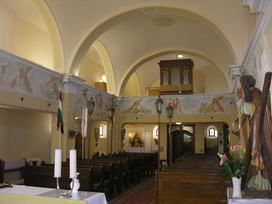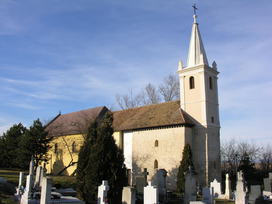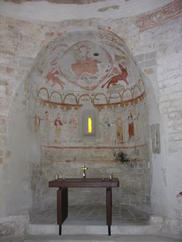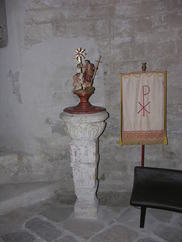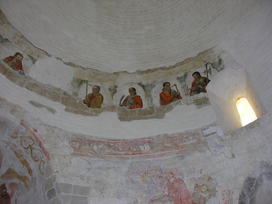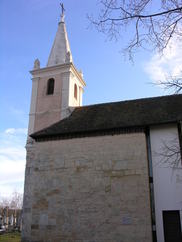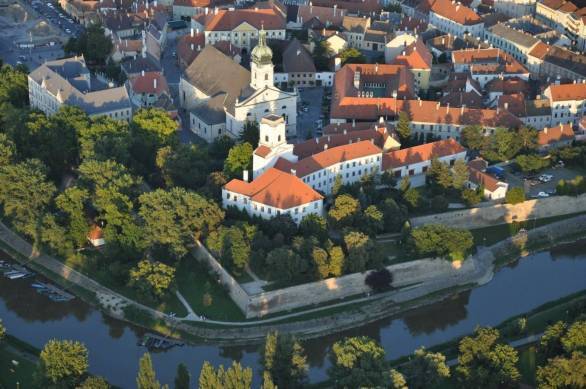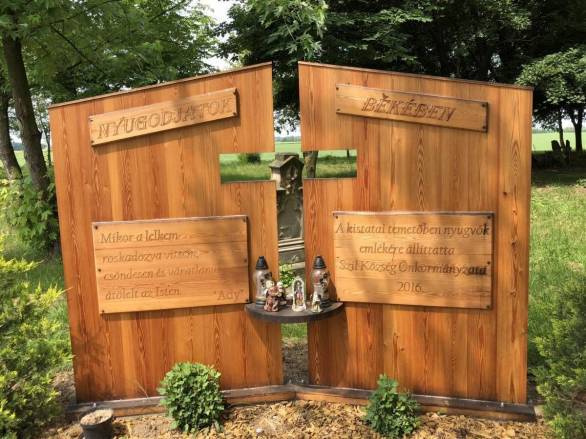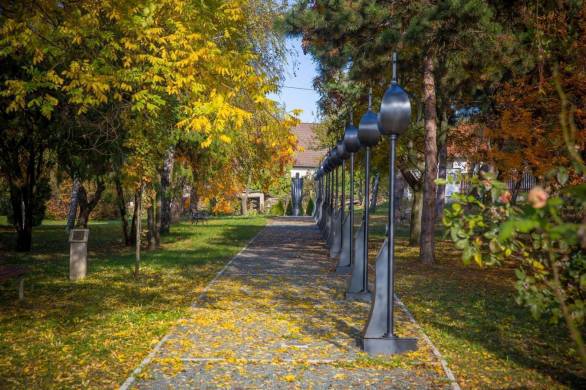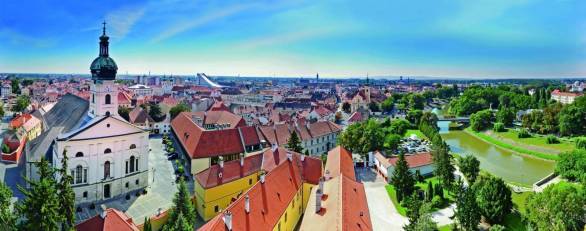St Andrew’s Church
The church’s chapel was built on the hill above the village in the 12th century. The originally free-standing rotunda has a horseshoe-shaped apse attached to its interior. The tiny apse is decorated with frescoes made after the Mongol invasion. In the arch, Christ’s image in an almond-shaped frame is surrounded by the symbolic figures of the evangelists with the apostles beneath this. The circular church was enlarged by Croatian settlers who arrived around 1660 and replaced the Hungarians who had been chased away by the Turks. The apse was moved to the abandoned half of the rotunda and its half-dome was painted with another row of apostles in Renaissance style. The tower was built in 1748. The Baroque transformation extended to the entire church. The building was expanded in the 1930s, and then in the 1970s, the circular church was separated from the three-naved church. The cover of the ancient stone basin features a miniature Baroque carving of John the Baptist and Jesus. Two wooden Baroque sculptures were added to the wall of the new church: St Augustine and Pope Gregory. Its namesake St Andrew is also immortalised in the altarpiece, mosaics and statue. The pictures on the chancel’s parapet represent the stations on the Way of the Cross. The interior tapestry on the tabernacle door was embroidered by the sisters of Saint Theresa of Calcutta.
